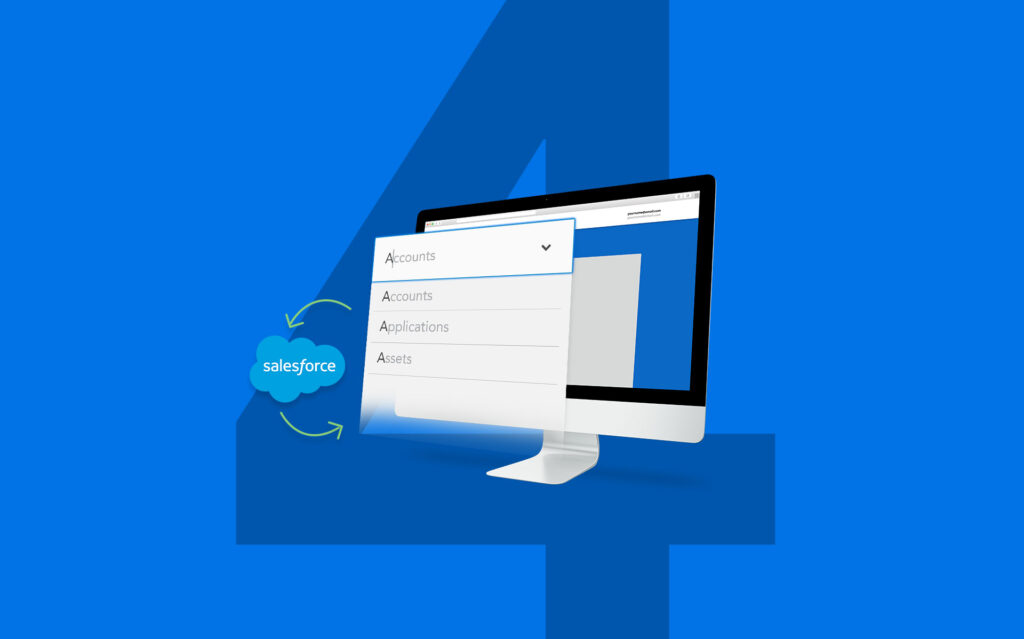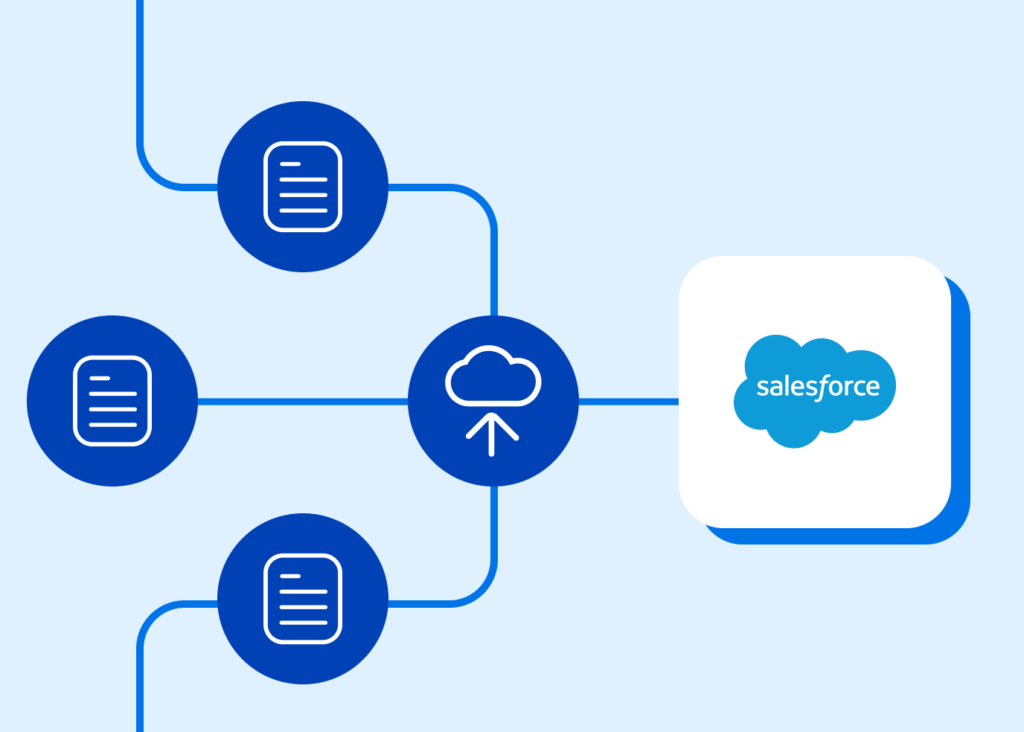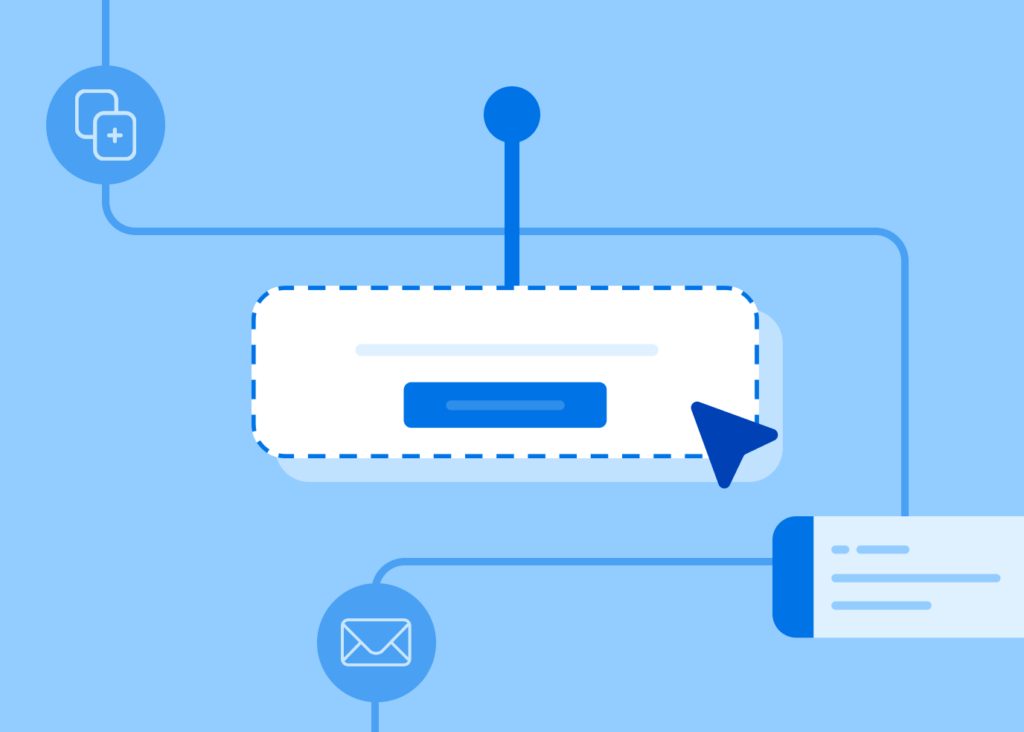Calling Salesforce “just a CRM” is like calling Amazon “just a bookstore”—it’s an understatement. Today, Salesforce is the backbone of business intelligence, automation, and customer engagement. But unlocking the full potential of that data requires more than simply using the platform; it demands the right strategies and tools for visibility.
As organizations lean on their Salesforce instance for deeper insights and automation, the question isn’t just “Who has access?”—it’s “How do we ensure the right access, at the right time, for the right reasons?” Poor visibility can lead to bottlenecks, inconsistent data, and blind spots in decision-making. Strong visibility, on the other hand, empowers teams, strengthens security, and ensures compliance—all while fostering innovation.
With Salesforce continually expanding its ecosystem (see the AppExchange) and developing new tools liek AgentForce, visibility into data becomes even more critical—not just for understanding “who sees what,” but for knowing how data flows across systems. Data enters Salesforce from various sources (e.g., web form submissions, sales interactions, external integrations), and it must be accessible to the right systems and people at every stage, from ingestion to analysis to action. Ensuring a clear data path is key to maintaining security, compliance, and making informed decisions.
What is Salesforce AgentForce and How Does It Differ from SFDC and Other Clouds?
Let’s break it down.
Salesforce Data Cloud centralizes and manages customer data, ensuring compliance and accuracy through clear access controls. While Salesforce offers various clouds (Marketing, Sales, Service, etc.) built on a shared core platform, Salesforce Data Cloud uses a distinct architecture and tech stack.
Salesforce AgentForce is an AI-powered tool that enhances Salesforce CRM (SFDC) by automating customer service and sales processes. It leverages data from SFDC to optimize decision-making and improve interactions, ensuring the right data is available at the right time for maximum business efficiency.
This guide covers best practices for optimizing Salesforce data visibility and security, with actionable steps to strengthen your organization’s approach.
1. Understanding the Role of Data Visibility in Salesforce
Visibility in Salesforce isn’t just about who can see what—it’s about ensuring the right people have access to the right data at the right time, and understanding how that data flows through the system. Poor visibility can lead to security vulnerabilities, inefficiencies, and compliance risks. Done right, proper data visibility enhances collaboration, streamlines operations, and fortifies data security—ensuring the right access and right movement of data from the moment it enters Salesforce.
Challenges of Limited Data Visibility
In Salesforce, data visibility becomes particularly challenging across the multiple clouds within the ecosystem—Experience Cloud, Sales Cloud, Service Cloud, Marketing Cloud, and beyond. With data flowing between these platforms and integrating with external apps, organizations often struggle to maintain a clear, unified view. This fragmentation can result in missed insights, such as key sales trends or customer service performance metrics, that could drive smarter, more informed decisions.
Security Gaps:
Without clear access controls in Service Cloud and other areas, sensitive customer data could be exposed to unauthorized users, creating serious security vulnerabilities and increasing the risk of breaches or insider threats.
Data Management Struggles:
As data grows across multiple systems, it becomes more difficult to manage effectively. The lack of visibility into how data flows between Sales Cloud, Service Cloud, and other systems can lead to inefficiencies and delays, making it harder for teams to track performance and respond to customer needs quickly.
Compliance Risks:
Fragmented data access makes it difficult to ensure that all compliance requirements—like GDPR or CCPA—are being met consistently. Without proper data governance across Salesforce and its integrated apps, organizations may fail to demonstrate compliance, risking fines, audits, or reputational damage.
Operational Bottlenecks:
When visibility into Salesforce data is unclear, teams waste time searching for the right information. Sales reps might miss critical insights from Service Cloud, delaying deal closures. Marketing teams may lack timely data for campaign personalization, leading to missed opportunities and reduced customer engagement.
Key Components of a Strong Salesforce Security Model
A robust Salesforce security model isn’t built on a single layer of protection; it’s about creating a comprehensive, multi-faceted approach where every level of access is carefully managed and controlled. By embedding security at every stage—from system settings to individual records—you ensure that data is always protected and remains in the right hands. Here’s how to get it right:
Organizational/System-Level Security:
- Leverage Profiles and Permission Sets to control what a user can do within Salesforce. Don’t just rely on default profiles—create custom profiles that align with each user’s role and responsibilities.
- Use Multi-Factor Authentication (MFA) across your Salesforce environment to add an extra layer of security for system access, especially for administrative users.
Object-Level Security:
- Use Permission Sets for dynamic access. Rather than constantly changing profiles, assign permission sets to grant temporary or role-based access to specific objects. This gives you flexibility without having to overhaul profiles.
- Ensure that Read-Only permissions are in place for users who only need to view certain objects but should not be able to make edits.
Field-Level Security:
- Mask sensitive fields (like credit card numbers, social security numbers, etc.) in Salesforce, so users can see the field but not the actual value. This keeps data secure while still making it accessible for non-sensitive tasks.
- Regularly audit field-level security settings and ensure they reflect current compliance and role-based requirements. For instance, financial teams might need access to specific revenue fields, while marketing might not.
Record-Level Security:
- Set up Sharing Rules with caution. Overly permissive sharing rules can expose data to more users than necessary. Use a restrictive sharing model and only open up access as needed.
- Leverage Role Hierarchies to automatically inherit data visibility based on a user’s position in the hierarchy. For example, a regional manager should be able to see the records of their team members but not necessarily of other regions.
Audit Trail & Regular Reviews:
- Set up Sharing Rules with caution. Overly permissive sharing rules can expose data to more users than necessary. Use a restrictive sharing model and only open up access as needed.
- Leverage Role Hierarchies to automatically inherit data visibility based on a user’s position in the hierarchy. For example, a regional manager should be able to see the records of their team members but not necessarily of other regions.
Best Practices for Enhancing Data Visibility
Improving data visibility is all about balance—making sure the right people have the right access while keeping your system secure and compliant. Here are some best practices that can help:
- Implement Permission Sets and Profiles: It’s not just about assigning permissions, it’s about tailoring them to each user’s role. Custom profiles and permission sets ensure that your team has the right level of access, no more, no less. This helps prevent accidental exposure of sensitive data.
- ID Watchdog reports that 60% of data breaches are caused by insider threats, something that well-defined permission models would prevent.
- Use Dynamic Sharing Rules: Business needs are always shifting, so your access levels should too. Dynamic sharing rules let you adjust who can see what based on changing roles or business priorities—without needing to overhaul your security model every time.
- Leverage Salesforce Shield and Encryption: Protecting sensitive data doesn’t have to come at the cost of usability. With Salesforce Shield, you can encrypt data at rest and in transit, ensuring that only authorized users can access certain information while keeping everything else running smoothly.
- Enforce Multi-Factor Authentication (MFA): MFA is essential for securing access to your Salesforce instance. It adds an extra layer of protection, reducing the risk of unauthorized access and ensuring only verified users can enter the system.
- Conduct Regular Security Audits and Access Reviews: Security isn’t set-it-and-forget-it. To stay ahead of potential risks, regularly review and update permissions and access controls. Periodic audits help you catch gaps before they turn into real problems.
Building a Culture of Data Security and Literacy
Security isn’t just a technical issue—it’s a cultural one.
When it comes to Salesforce, security is more than just configuring settings or enabling features. It’s about embedding a security-first mindset into your organization’s culture. By ensuring that every team understands their role in safeguarding data, you help protect your Salesforce environment from accidental breaches and external threats. Here’s how to foster that mindset within your Salesforce ecosystem:
Train Employees on Salesforce Security Best Practices
Salesforce is a powerful platform, but its full potential comes with a responsibility to secure sensitive data. Regular training sessions should cover topics like setting strong passwords, recognizing phishing attempts, and using Salesforce Shield to track field history. Make sure your teams know how to handle sensitive customer data—such as using Field-Level Security to protect financial information in Service Cloud—and the risks associated with poor data management.
Promote a Security-First Mindset Across Teams
Your team is the last line of defense. Do they know that? Security should be a core value for every user of Salesforce, whether they’re in sales, marketing, or support. Encourage teams to think about security from the moment they access their Salesforce instance. For example, sales reps should be trained to use permission sets for sharing specific customer data, ensuring that only the right people have access to sensitive account information. When everyone is aligned on the importance of data protection, your Salesforce system becomes less vulnerable to human error.
Mastering Cross-Team Collaboration and Workflow Data Visibility
Managing data visibility is a delicate balance—ensuring the right people have access to the right data at the right time, while also protecting sensitive information. For instance, marketing and sales teams need to collaborate to identify which customer data is crucial for targeted campaigns—like purchase history or engagement data—but also ensure they don’t overexpose personal details that could breach privacy. On the other hand, HR, IT, and compliance teams should work together during onboarding to set up role-based access, ensuring that new employees only have visibility into the data that’s necessary for their role. For example, an HR assistant may need access to employee records but not to sensitive financial data, while a finance team member will need access to financial records but not personal HR data.
Tips for Optimizing Workflow Data Visibility:
- Define Access Rules: Clearly define what data needs to be visible at each stage of a workflow. For example, a sales rep may need full access to customer interaction data, but only partial access to billing information until a deal closes.
- Review Permissions Regularly: As your business grows and roles evolve, regularly audit and update permissions to ensure they match the latest needs. For instance, a project manager may need full access to a project’s data at one point but only limited access as the project moves forward.
- Automate Controls: Use tools to automate data flow and visibility controls, reducing the chance of manual errors. For example, you could automate permissions based on role changes or time-based access, ensuring that only the right team members can see specific data at the right stage of a project.
- Integrate Collaboration Tools: Integrate tools that allow seamless collaboration while maintaining security, such as secure file-sharing platforms or project management tools. This ensures that teams can easily access and share the data they need without exposing sensitive information.
Got it! Here’s a streamlined version that focuses on the general concept of data visibility between applications, with FormAssembly as an example, rather than being the focal point of the entire section.
Ensure Vendor App Transparency and Data Visibility
When integrating third-party applications with Salesforce, maintaining data visibility across platforms is essential. It’s crucial to ensure that data flows seamlessly between systems, remains consistent, and is accessible to the right teams.
For example, using a tool like FormAssembly to collect customer data through online forms—such as feedback surveys or lead generation forms—should trigger automatic data syncing with Salesforce. But the visibility doesn’t stop there: you also need to ensure that changes made in Salesforce (such as updates to contact info) are reflected in the third-party app.
Key considerations for optimal data visibility between systems:
- Data Mapping: Make sure that data from the third-party app, such as form submissions, is mapped accurately to Salesforce objects (e.g., Leads, Contacts, or Cases). This ensures the right data is pulled and pushed between systems.
- Role-based Access: Ensure that data permissions are controlled within both Salesforce and the third-party app. For example, sensitive customer data should only be visible to authorized teams, maintaining privacy and compliance across both platforms.
- Real-time Syncing and Bidirectional Connectors: Leverage real-time syncing between your third-party app and Salesforce to ensure that data updates are immediately reflected in both systems. Bidirectional connectors allow for seamless two-way data flow, where updates made in Salesforce are instantly reflected in external applications and vice versa, ensuring data consistency across the board.
By ensuring that your third-party apps and Salesforce are fully integrated with real-time syncing and bidirectional data flow, you create a system where data is always up-to-date, consistent, and visible to the right people at the right time.
For other tips on vetting third-party vendors check out this webinar.
Develop Clear Documentation and Data Access Guidelines
Clear documentation around data visibility is key to ensuring that your team knows exactly what information is accessible to them and when. Create guidelines that outline how data is shared and who has access to specific records in Salesforce.
For example, document which teams should have access to customer data and how visibility is adjusted when tasks are assigned or cases are created. This approach minimizes confusion and helps employees understand how to view and interact with data responsibly, ensuring transparency and efficiency across your Salesforce instance.
Tools and Strategies for Managing Data Visibility in Salesforce
- Leverage Salesforce Reports and Dashboards: Use these built-in tools to track who’s accessing your data and identify any patterns or anomalies. It’s all about staying on top of your data, directly within Salesforce.
- Set Up Automated Alerts and Workflows: Configure real-time alerts and automated workflows to notify you of any unauthorized access or suspicious activity, so you don’t have to constantly monitor.
- Utilize FormAssembly for Bi-Directional Data Sync: FormAssembly’s workflow dashboard makes it easy to push and pull data between Salesforce and other systems, ensuring seamless data visibility across platforms while maintaining accuracy and control.
Future Predictions for Salesforce Data Visibility
As we look to the future, Salesforce data visibility is set to undergo some exciting transformations. These ideas might sound a little ahead of their time, but hey, we’re calling it now—don’t say we didn’t warn you!
Emotion-Driven Data Access: Picture this: Salesforce uses AI and biometrics to detect users’ emotional states (think facial recognition, voice tone, or body language) and adjust data visibility accordingly. Sensitive data could be made visible only when the system detects the user is calm and focused, reducing human error and enhancing decision-making in high-stakes situations.
Real-Time, Dynamic Data Ownership: Data privacy could evolve into a model where you control access in real time. With Salesforce’s future “data wallet,” users could instantly grant or restrict data access, making it possible to determine who sees what and for how long—offering unmatched transparency and control over your data.
Contextual Data Visibility: Zero-trust security won’t just apply to user authentication—it could expand to data contextualization. In this model, Salesforce would automatically tailor what data a user can see based on context—like their location, project, or current task. If you’re working on a specific project, Salesforce would surface only the most relevant data and hide unrelated info.
Context-Aware Data Exposure: Salesforce could level up context-awareness by adjusting data visibility in real time based on factors like time of day, user workload, or external triggers (such as a sudden business change or a system alert). This adaptive model ensures data visibility always aligns with business priorities, optimizing access for efficiency and relevance.
Conclusion
In Salesforce, data visibility is more than just about access—it’s about ensuring the right information is in the right hands at the right moment, empowering teams to act with confidence. As data grows more complex, how you manage and share it today will define your organization’s agility tomorrow.
Take a step back and ask: Is your data as visible, actionable, and dynamic as it could be? If you’re not sure, it’s time to rethink how you’re handling it. FormAssembly can help you unlock new possibilities by syncing data seamlessly with Salesforce, giving you better control and visibility to improve workflows, collaboration, and decision-making.
Ready to make data work harder for you? Start optimizing your Salesforce data visibility today. Learn more.


